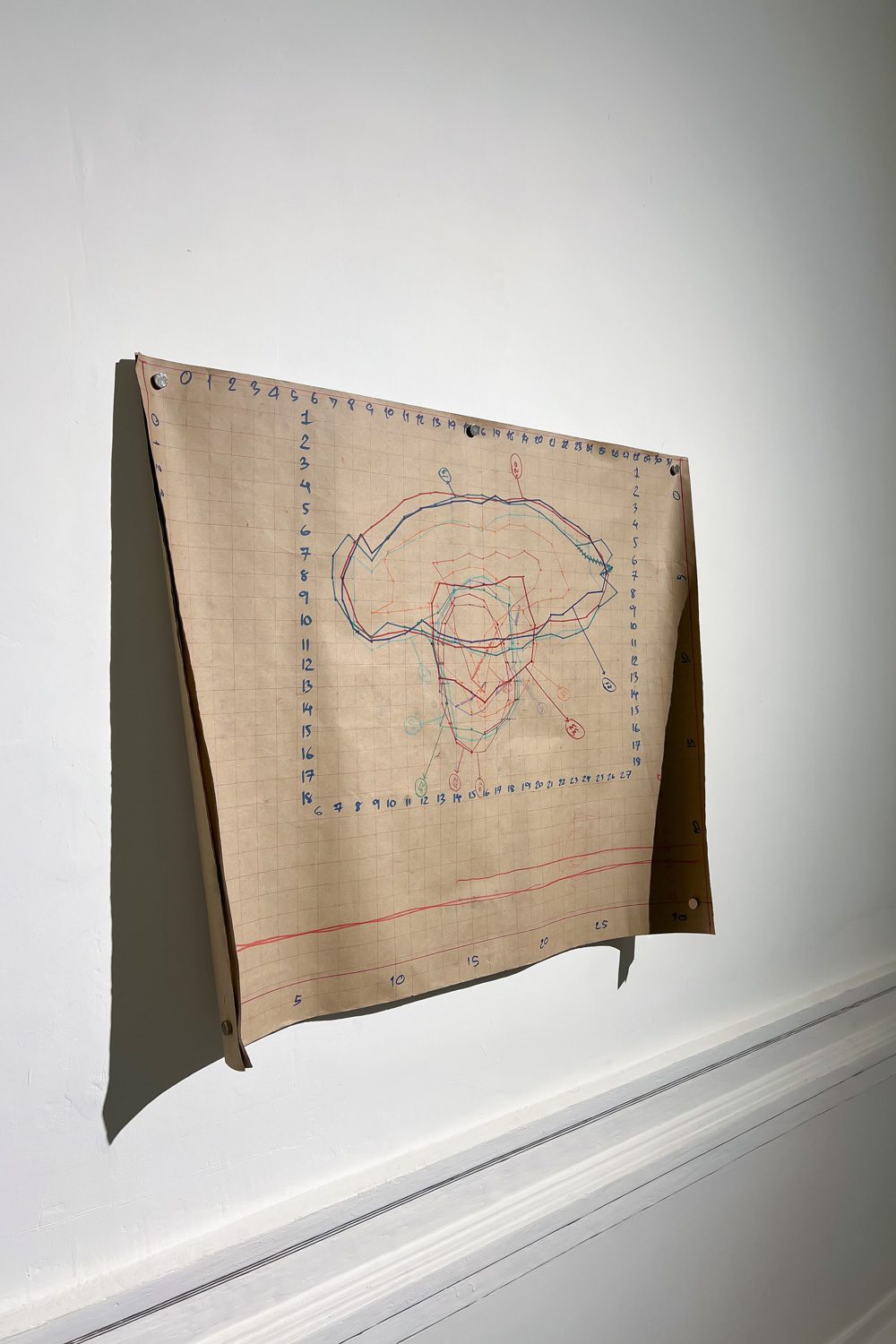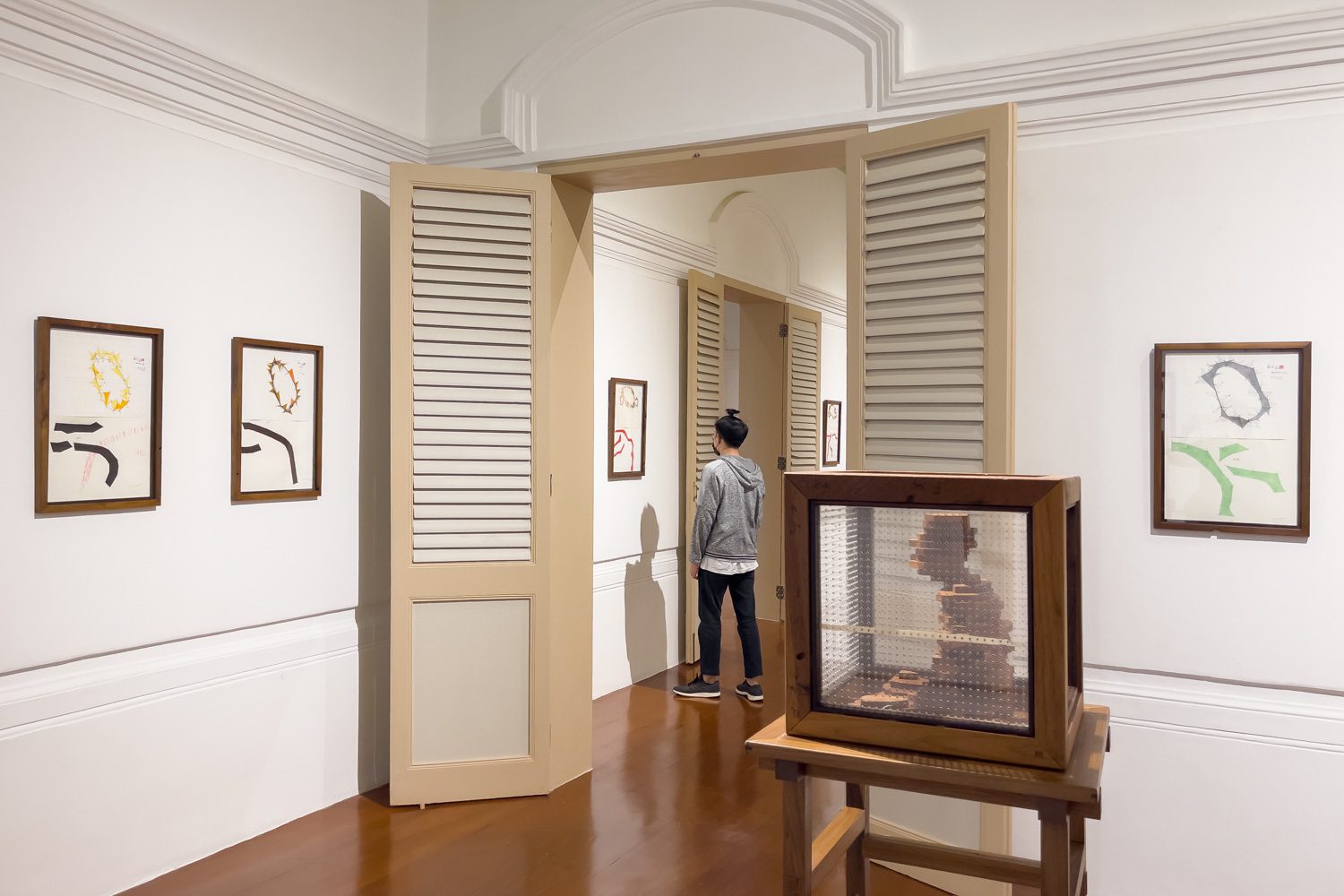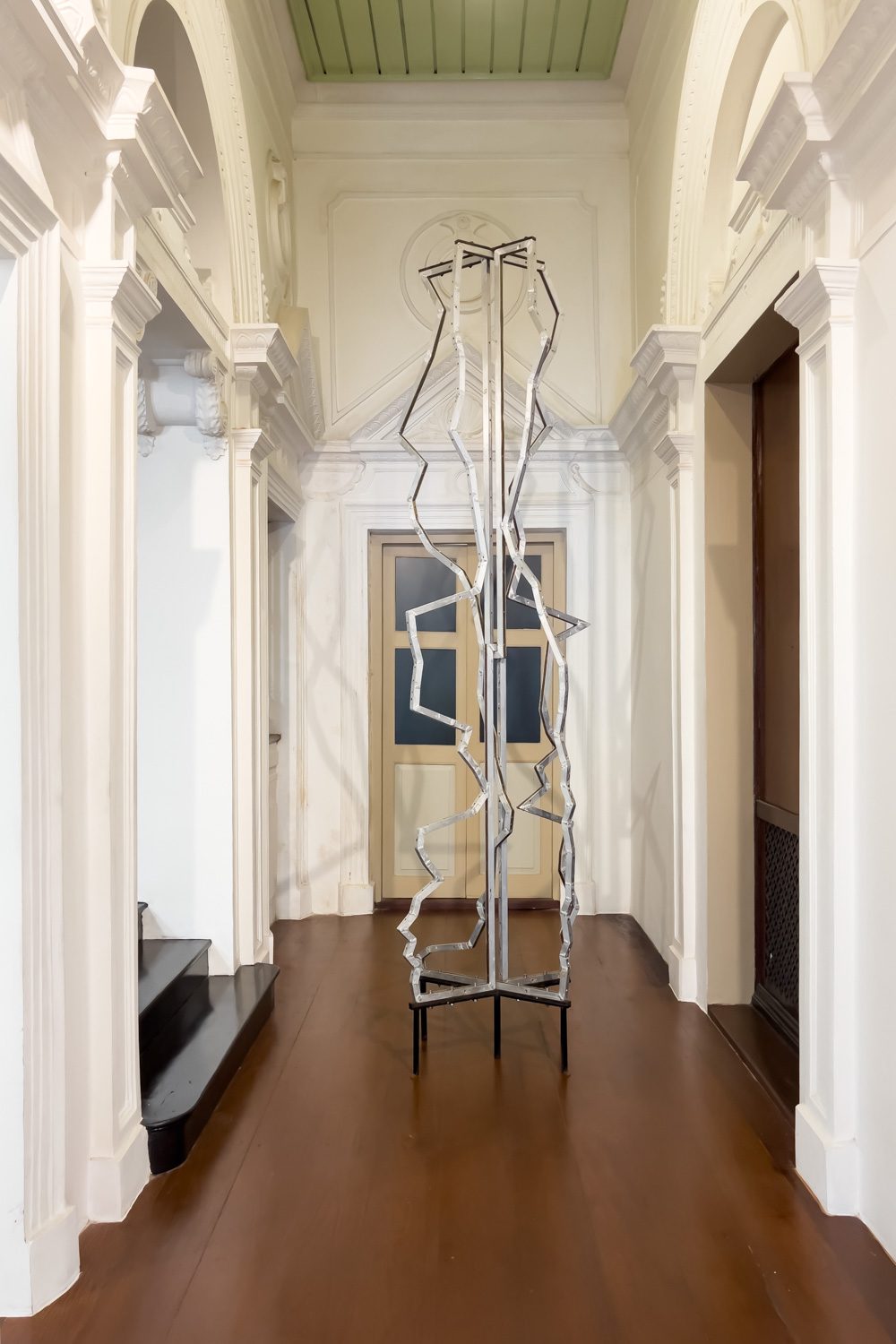INSTEAD OF DEPENDING ON ESOTERIC OR MEDITATION, TAWATCHAI PUNTUSAWASDI EXPLORES HIS OWN ‘VOID’ VIA MATHEMATICAL OPERATION AND TURNS THE RESULT INTO DRAWINGS AND SCULPTURES
TEXT: NAPAT CHARITBUTRA
PHOTO: KETSIREE WONGWAN
(For Thai, press here)
Tawatchai Puntusawasdi’s work completely refutes the stereotype that “artists are bad at math,” as a significant component of each of his sculptures requires extensive and painstaking mathematical calculations. Traces of ‘carrying’, as in “carrying numbers,” is clearly illustrated throughout his solo exhibition “Existence of Void,” which is currently showing at The Art Centre, Silpakorn University. In contrast to his prior works, which made use of divergent perspectives of objects, Tawatchai takes a more introspective approach and uses his own body for this artistic project.
A video capturing a dharma practice center serves as the exhibition’s introduction. It was there, during Tawatchai’s dharma practice, that he first encountered the ‘void’ within his own existence.

Instead of depending on esoteric or mystical skills attained via meditation, the artist calculates his own body mass to explore the depths of his being. Tawatchai constructed a container with refined grids on all five sides and tiny apertures for inserting metal rods. Presumably, his assistant put the rods into the indicated hole as he sat within the container. Similar-sized rods were used to record the varying depths indicated by hundreds of spots at which the rods touched various parts of the artist’s skin.
The process resulted in the ‘Border of Void’ installation on the Art Center’s second floor. The ‘void’ is the starting point for the artist’s narrative, detailing his search for the abyss. There was a wooden sculpture enclosed in an acrylic box labeled ‘A Scanner Device for 3D’ further into the exhibition space, in a small chamber off to the right. The artist made a three-dimensional model of himself based on the inclined angles of his body’s section (determined by the distance between each hole) as a result of the calculated measurement he did with his body when sitting inside of the box. The drawings from ‘Top View & Pattern of Face’ series are spread out across the gallery’s walls, depicting numerous stages of the procedure.

If we genuinely consider these traces of ‘carried numbers,’ it appears that we will be able to make sense of the sculptures built of various materials (brass, aluminum, wood), as if the artist were holding our hand and guiding us during the entire encounter. However, this is not the case in reality. I found myself unable to comprehend the artist’s logic even after looking at the works in greater detail. I had always thought that there was an overarching concept at work when a shape was altered, twisted, or combined to create a new one; but, it turns out that I was incapable of understanding the underlying principles. Is it feasible that this is the ‘void’ to which the artist initially alluded?
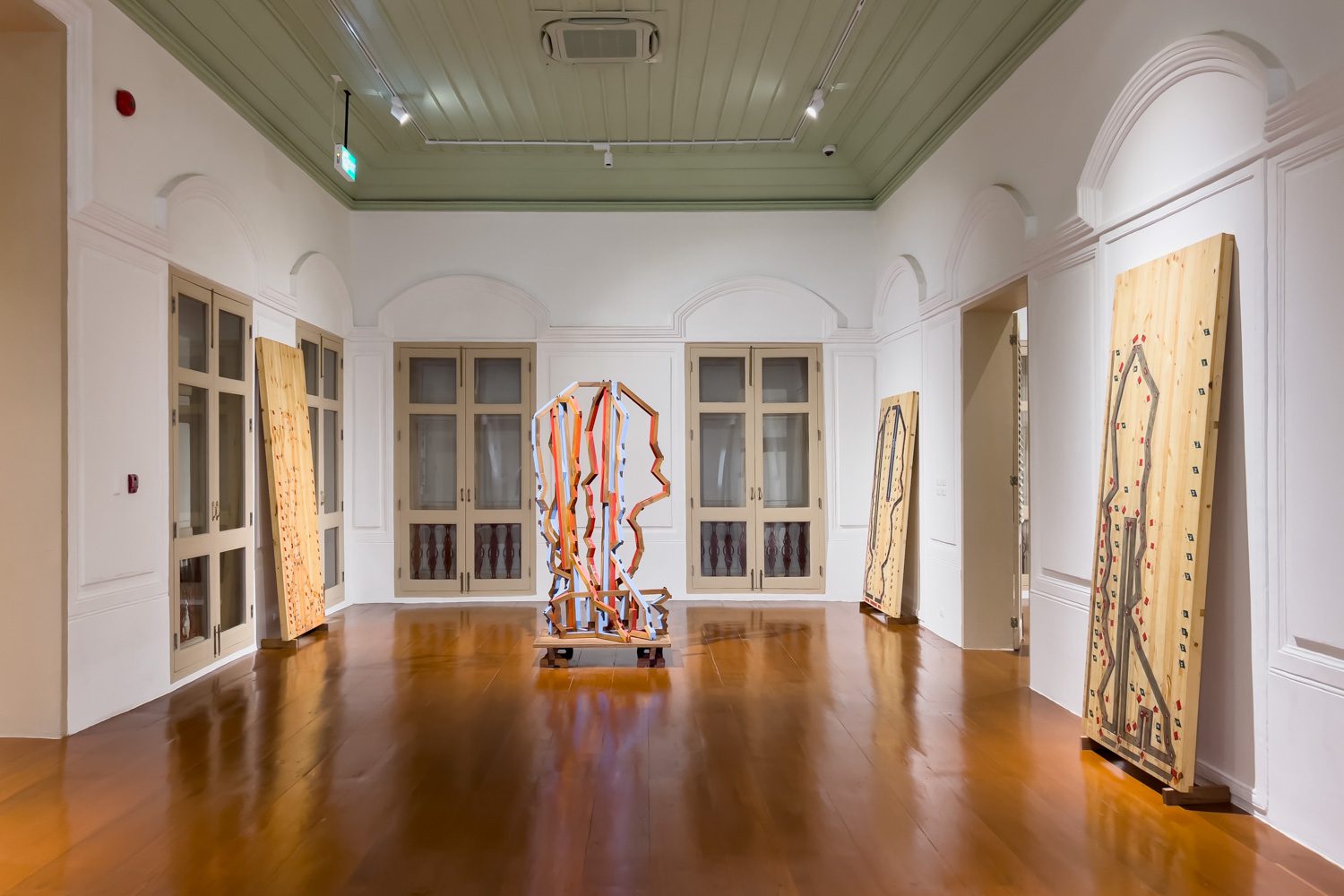
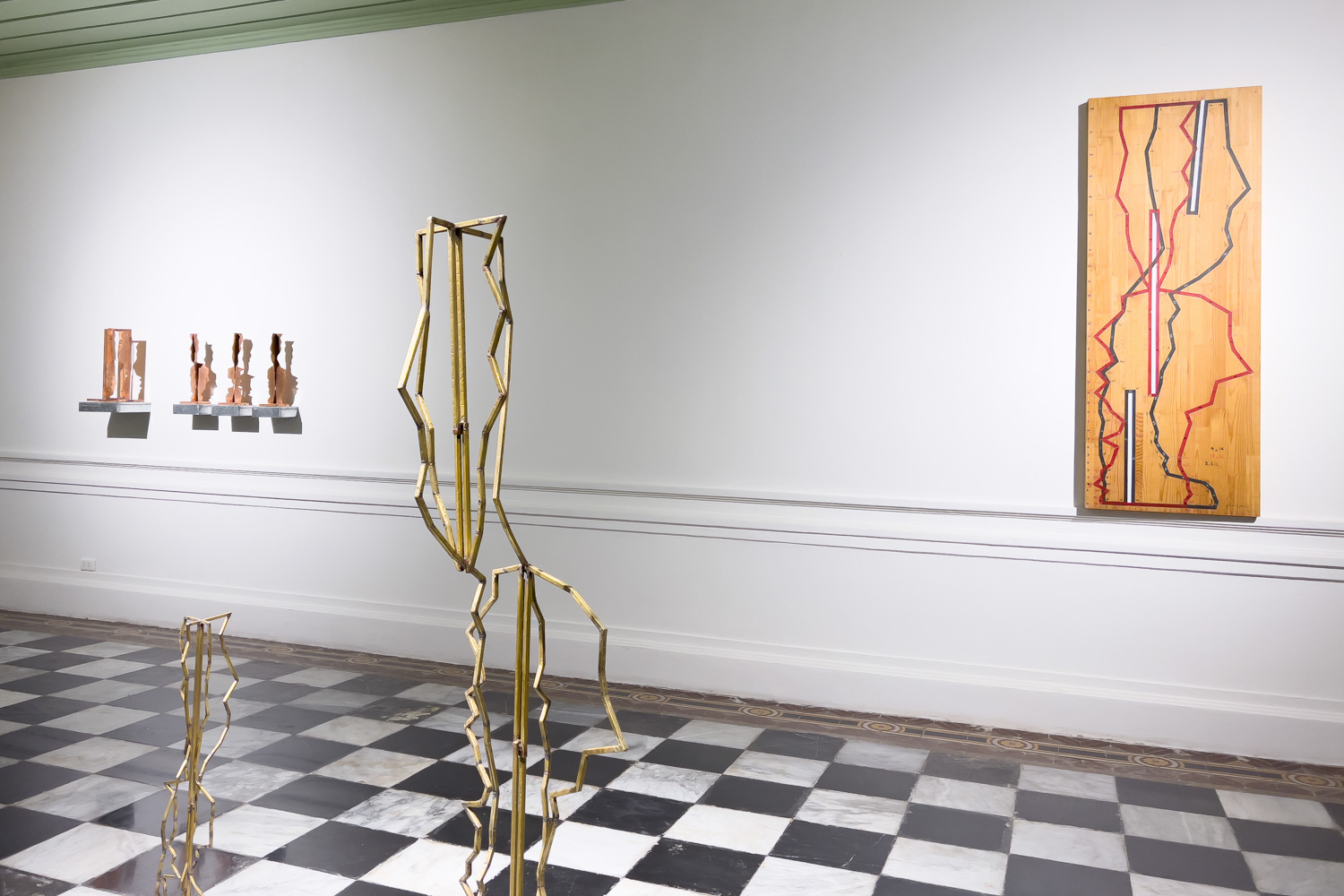
Existence of Void is a fun exhibition to experience. Each piece tells its own story, and if you look closely, you can see that the artist crossed out certain lines but left them in place. Looking into each work, we can assume that the artist employs a technique similar to the LiDAR technology found in iPhone 13 Pro’s built-in camera. Reading the introduction written by Kritsada Duchsadeevanich, the curator, I find myself pondering the meaning of ‘above all logic’ after having finished the entire show.
There is still time to check out Tawatchai Puntusawasdi’s gorgeous sketches and refined lines at the Art Centre, Silpakorn University before the exhibition ends on September 17, 2022. Don’t miss out on the chance to explore the rationale behind Tawatchai’s definition of the ‘void’.




